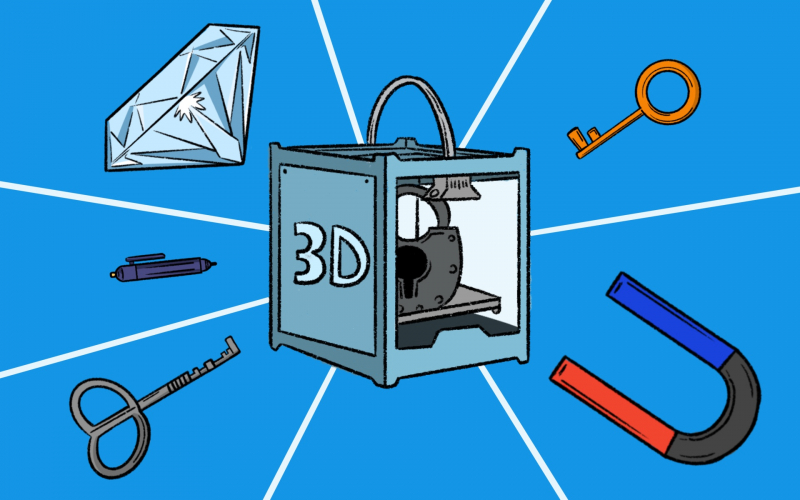The number of counterfeit goods on the global market continues to grow and the ongoing pandemic has only made the situation worse. As estimated by Euromonitor International, the global economy has lost as much as $2.2 trillion from sales of fake products in 2020. What does the world do to overcome the crisis? Can science save the day? The answer is, in fact, yes. ITMO scientists have recently proposed a highly promising anti-counterfeiting technology – a special gel ink based on 3D printing. In this article, Egor Ryabchenko, a Master’s student at ITMO’s ChemBio Cluster, answers the most frequently asked questions about this novel method and others.

What kinds of protection technologies are there?

There are many anti-counterfeiting techniques for different types of products. For example, there are RFID (radio frequency identification) tags. This technology relies on radio waves to identify objects. It is often used to protect certain equipment or wines produced in specific geographic regions. Holograms are traditionally used to authenticate documents. Holographic images have an iridescent effect and show different images – be it a trademark or a company’s name – depending on the viewing angle.
Is this anything like the anti-forgery markings on money?

They do have something in common. Just like any other paper products, banknotes can have embedded watermarks, holograms, and security threads that help distinguish real money from counterfeit copies.
How reliable are these methods?

All these features, unfortunately, can be copied using cheaper materials. A significantly large part of all products on the market are counterfeited this way. Another problem is that some signs can fade away or completely disappear from the surface. At the same time, some methods, such as RFID tags, are proven efficient but are far too expensive to be used on most consumer products.
What else can science offer us?

Scientists are working on new methods that will be safer, more reliable and practical, and inexpensive. Not so long ago, Russian researchers and their colleagues from South Korea and Vietnam developed a magnetic nanomaterial that can prevent forgery of valuable documents. Other scientists have invented invisible protection markings for diamonds. And scientists from ITMO along with colleagues from the Bauman Moscow State Technical University and the University of Toronto have come up with a special gel ink that is not just eco-friendly and affordable but also safe for products and consumers.
Are these markings harder to imitate?

Absolutely. The gel tags developed at ITMO, for instance, are based on polymers and can contain several images at once. Each of them can only be seen when exposed to monochromatic radiation at different wavelengths. This makes it unlikely for criminals to forge the entire tag even if they manage to copy one of the images.
Where can they be used?

Gel tags are suitable for various surfaces such as plastics, glass, metals, or fabrics. Made of accessible materials, they can be used on such consumer goods as clothes, beauty products, gadgets, furniture, and so on.
How can they be improved further?

We can definitely make it better by turning to functional optical materials or other optical effects (polarization, interference, or birefringence). Another way to improve the technology is to design more complex images and models. For instance, we can achieve faster printing speeds if we reduce the size of the tags.
source (https://news.itmo.ru/en/science/new_materials/news/12452/)